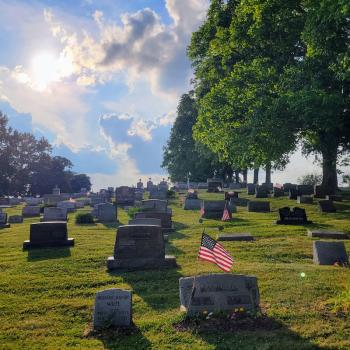
There are many problematic messages about sex in the Catholic community that increase vulnerability to abuse. One “official” practice that is extremely problematic is lauding and even canonizing “martyrs in defense of chastity.” These are almost always women who were murdered in the process of resisting rape. With all due respect to “tradition” on the matter, these murders have nothing to do with chastity, which is the subordination of sexual desire to the greater good. Women (or men) who are murdered by a sexual assailant are not subordinating any sexual desire, and neither is their death a greater good than becoming a survivor of sexual assault. The way that the hagiographies of saints ranging from Agnes and Lucy to Maria Goretti often are presented induce guilt in victims of sexual assault, and teach deadly lessons to our daughters about what is the most “heroic” thing to do in case they are assaulted. This is not only an antiquated practice, either. On September 1, 2018, Anna Kolesarova was beatified as a “martyr for chastity” because this 16-year-old broke free of a drunken soldier trying to rape her, and then he shot her in the head. This year, a Slovak Archbishop called this “sacrifice of holy purity” “heroic testimony” that “every Catholic and believer can aspire to,” and the announcement of Pope Francis’s approval of her cause from the Vatican’s Dicastery for Laity, Family, and Life lauds her for “preferring to die rather than give herself to him.” I have no words for how terribly confused these clerics seem to be about the difference between being sexually assaulted and sexually tempted, and how ironic it makes the name of the Dicastery seem.
This conflation of sexual assault with mutually voluntary sexual sin is closely related to an inadequate appreciation for the importance of consent in sexual ethics. The Church does put a strong emphasis on consent when it comes to entering into marriage, and many annulments are granted on the basis of inadequate consent. But apart from close scrutiny of the adequacy of consent at this single point in time, many teachers of Catholic morality refer to consent hardly at all. Some overlook the emphasis on mutuality in every marital act discussed at length in the Theology of the Body and alluded to in Humanae vitae, and reference older texts that focus on “marital debt” and an irrevocable consent to sexual giving implicit in the marriage vows, which reduce marital sex to an unhappy burden at best and justify marital rape at worst.
More often, Catholic moral teachers get the importance of consent within marriage right, but miss the relevance of consent in sexual activity outside of the marital act. “All sexual activity outside the marital act is sinful, so what difference do the details make?” they reason. Well, if we want to reduce sexual coercion and the suffering of victims, understanding the nature of consent and talking about it as the most essential element of sexual ethics makes a big difference. Young people who are struggling with sexual temptation need to realize that coercing any kind of non-consensual sexual act is not just sinful: it is mortally sinful and criminal. It is not a “mistake” that people within the normal range of concupiscence make. It is a monstrous deed that generally requires quarantining the assailant from the rest of society to protect the innocent. On the other hand, those who are victims of coercion need to know that even freezing up or “complying” under duress is not consent. Too often assault victims think they had some kind of culpability because they theoretically could have done more to resist. This simply is not true under Catholic moral theology, but when free consent is not well-defined in teaching about sexual morality, many victims of assault end up also carrying guilt and shame over their “failure.”
Another problem, at least in some Catholic schools and dioceses, is failing to give children and teens basic factual information about human reproduction, healthy relationships, and good touch/bad touch. I’ve been reviewing the curriculum used in Catholic elementary schools in my Diocese, and am appalled by its utter inadequacy. There is absolutely NO content about “good touch/bad touch,” a topic that is covered already in kindergarten in the local public schools and reviewed every year thereafter. “Safety” information focuses entirely on “stranger danger,” never suggesting to children that the people most likely to abuse them are actually family members, teachers, ministers, friends of family, and others who naturally are given trust. They never once teach children the names of their private body parts, or even identify euphemistically the private parts that shouldn’t be touched. They do not discuss puberty. They describe the “marital act” as this mysterious thing whereby “a natural husband and natural wife give themselves totally to one another body and soul. This act cooperates with God the Father and sometimes God chooses to create a new human being through it.” The curriculum never even uses the word “sex” until 8th grade, at which point sex outside of marriage is named as a serious sin, but never defined. A middle schooler going through this curriculum could very well engage in full intercourse and not even know it because they haven’t been told what it is. More likely in the present day, the vague references will motivate them to Google to find out more, and encounter some very problematic content on the Internet in the process.
In lieu of presenting biological information and basic training in identifying and reporting abuse, the curriculum from 5th grade onwards focuses on sources of authority. They are taught that the Church, parents, and other authority figures give us rules so that we can enjoy “true happiness.” But what if Father Fingers tells you that X is wrong or Y is required? Does that make it “Church teaching”? How is a 10-year-old supposed to discern such things, especially when they don’t even have vocabulary for identifying their private parts and in what contexts is touching them appropriate or not? The curriculum seems like an open invitation to clerics to abuse their authority over children rather than informing their consciences. It really makes me wonder if the former Director for the Office of Child Protection, who was removed from ministry shortly after his 7 years heading up this critical office due to a credible accusation of sexual misconduct with a minor, wrote the curriculum. But rather than update it for an era when kids have ubiquitous access to porn and sexting, etc. on their smart phones, the new-ish Bishop has been repeatedly urging parents of public school children in the Diocese to opt-out of the well-constructed, factual, and abstinence-promoting family life education curriculum developed by the state and customized by local elected school boards. I reviewed this public school curriculum that my Bishop has been taking to podcasts to warn about, and it has only left me suspicious about why he would urge parents to opt out. Irresponsible naïveté would be the most charitable explanation.












